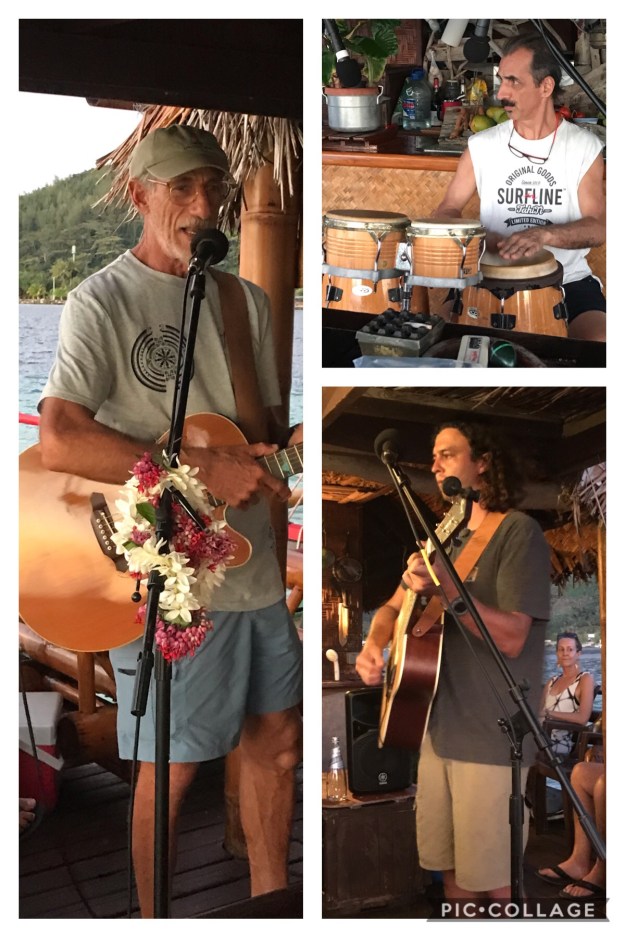We often hear locals strumming on their Uke or practicing on their drums and it draws us like bees to flowers. However, it is rare to attend a music gig or concert outside of a heiva, especially during covid. So, we jumped at the chance to attend “rock the barge” with a few locals and cruisers.
Steve, on Liward, is a very talented guitar player and singer. He has been playing and putting on mini concerts with locals all over French Polynesia. He invited Frank who owns the shell museum (see this post) who is a percussionist, and Terani to sing and play guitar.
Now, all they needed was a venue. Typically, they play at the Huahine yacht club. However, with covid restrictions we could not “gather” there. However, there is a local family, Teiki and Tea, who have a beautiful house boat. They have sailed it all around French Polynesia (by spinnaker). They graciously offered their vessel for rock the barge!
A Polynesian House Boat
This remarkable house boat looks like a party barge as you approach. We had seen it around several islands. We approached it once hoping to buy a drink. However, we quickly learned it was “prive” and went on our merry way. They have a large engine and a spinnaker that helps maneuver the vessel from anchorage to anchorage.
Several large solar panels and a small generator provide power. Everything looks authentically Polynesian and several varieties of local wood are used all around the boat.

Teiki and Tea’s home
They have an open floor plan where the galley and salon are out back. The helm is in the front, sleeping quarters are upstairs and below the sleeping quarters is a living / storage area.
They have a baby goat, an old rabbit, a cat and soon a chicken onboard.

They used a piece of bamboo for their herb garden and have beautiful Polynesian art all over the boat. Can you guess what the rock like item is in the middle photo? See answer at end of the blog.

They also had a beautiful, fast outrigger that they hand built over many months! It was gorgeous sailing across the lagoon toward our anchorage.

Rock the Barge
It was time to rock the barge! Steve had set up all the gear, did the sound check at 1700, and the festivities begin at 1800. The main band consisted of Steve (left) lead guitar and singer, Frank on percussion and Terani on guitar and co-lead singer.

They had Teiki (the owner of the barge) fill in on harmonica on many songs and we had a guest appearance by Puamu who sang an amazing rendition of an Adel song!

We should have been better at social distancing, but considering there are zero cases of covid in Huahine we thought we were safe. Hopefully. There were about 20-25 people on the barge and another 12 people in the dinghies. I love the local ladies’ flowers; they just enhanced their natural beauty.

A few of the dinghy crowd. Tope is Linette and Neils (Storm Along) and Floris and Ivar (Luci Para 2). Below is Dave and Jan (Hanna) and Ramon and his wife (Nawom)

Somehow, I was blessed with a crown and a floral leigh at the end of the night – perfect ending to a perfect concert. I love Rock the Barge nights.

ANSWER: The rock like item is an anchor. A line is tied around the top portion, then it is tossed in the water and holds their barge in place.
Events from this blog occurred on 18 October 2020. Our blog posts run 6-8 weeks behind our adventures.























